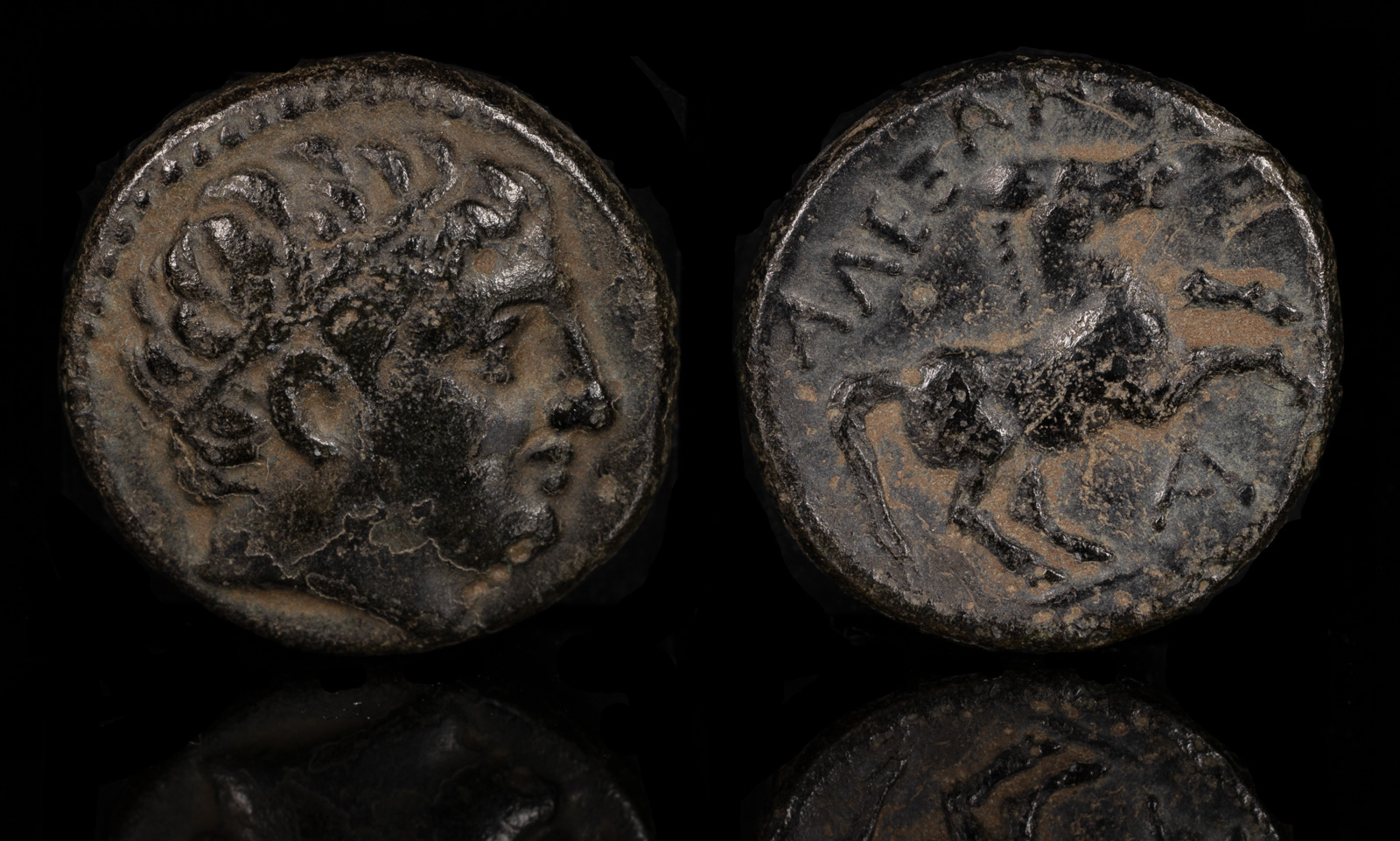
Bucephalos
Uncertain Macedonian mint, circa 336-323 BCE
Diademed head of male to right / Horse galloping to right, AΛEΞAN[ΔPOV] above, A[I?] below.
Price 363. 3.34g, 16mm, 3h.
Ex Roma
Could this ancient coin depict Bucephalos, the famed horse of Alexander the Great? Debating this topic is an esteemed panel.
Me: Of the ancient coins that have trickled down to us today, only one is clearly known to depict Bucephalos. That is a medallion, known from only seven copies, depicting Alexander charging against Poros while mounted on Bucephalos in the Battle of Hydaspes. Besides this one, several others are often mentioned concerning Bucephalos. The most widely known was issued by Gordian III roughly five hundred years after his death. This is obviously a commemorative coin and not a contemporary. The second is a silver issue by Seleukos I Nikator. While Seleukos was a contemporary of Alexander and Bucephalos, he had his own cherished horse. Most therefore believe this is Seleukos’ own steed, as he would have had little reason to depict Alexander’s horse. That leaves this one, which was minted during Alexander’s lifetime and clearly pictures a horse.
Myself: While what you say above is true, similar designs were also minted before and after Alexander III. Alexander II, Philip II, Antipater, and Alexander V minted nearly identical coins. This is therefore just a standard type and in no way depicts Bucephalos.
Me: I wondered that too, but when you compare the pose of this horse compared to that on the Poros coin, they’re identical. Also, placed next to a Philip II version, it’s clear these are different horses.
Myself: That’s due to different die makers, you moron. Each will engrave the die just a bit differently. As for the similarity with the Poros coin, it’s quite common to depict a horse rearing.
Me: Let’s look at this with a different angle. This coin was minted in Macedonia during Alexander’s lifetime, which means it was most likely during Bucephalos’ lifetime as well, correct?
Myself: Yes.
Me: And were we to travel back in time and ask a young boy, “who is Alexander’s horse?” he would know Bucephalos. Do you agree?
Myself: We cannot know for sure, but this seems likely. The legend of Alexander taming Bucephalos was well-known.
Me: So, just like girls and boys have posters of their favorite sports and rock stars today, it’s conceivable that back then Macedonian kids would have had Alexander and Bucephalos posters over all their walls. They would have slept under Bucephalos blankets, received little Bucephalos figurines in their Happy Meals, and would have owned multiple Bucephalos trading cards.
Myself: Now you’re being silly.
Me: Then what are the odds that when someone happened to look at this coin way back then, they would have said to themselves “I wonder if this is Bucephalos?”
Myself: Yes, I suppose that must have occurred.
Me: And therefore, maybe Alexander ordered a coin of his horse and maybe he didn’t. It doesn’t really matter. Back then, some would have just assumed this was Bucephalos, and that’s good enough for me. I proudly attribute this as a “coin of Bucephalos.”
Myself: Whatever.
Alexander the Great obtains the horse Bucephalus.
May
Alexander the Great defeats Poros at the Battle of the Hydaspes. His horse Bucephalus dies at its conclusion. Antigenes and Seleukos command hypaspists (special infantry) who cross the Hydaspes with Alexander.